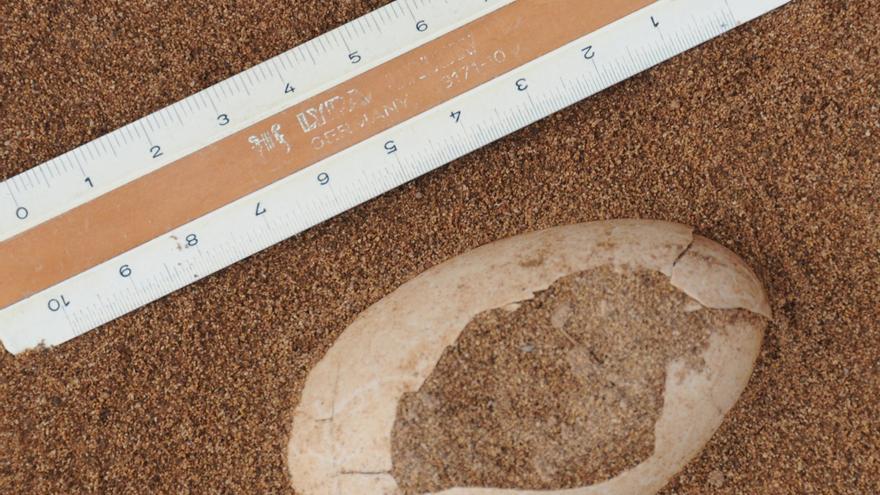
A multidisciplinary team has carried out the biomineral analysis of two complete fossil shearwater eggs (Procellariidae Family) that were recovered in one of the Roman sites of the Lobos Island and that have a chronology from mid-1st century BC to mid-1st century AD.
In a statement, the Catalan Institute of Human Paleoecology and Social Evolution (IPHES) has explained that the results of this research have been published in the scientific journal Diversity.
Thus, it has been a work led by the postdoctoral researcher Juan de la Cierva at IPHES-CERCA, Carmen Núñez-Lahuertaand in which researchers from the University of La Lagunathe Archaeological Museum of Tenerife and the University of Zaragoza.
In this sense, in the Canary Islandsfossil egg remains are relatively common and have been the subject of research since the 1970s.
Despite this research tradition, the works focused on its biomineral structure are very scarce, a fact that reinforces the relevance of the study that has just been published.
Núñez-Lahuerta has commented that “although a priori all bird eggs are very similar, they have a highly variable complex structure.”
“The eggshell is made up of three layers, but their relative thickness can be different, as is the presence and distribution of other structures such as cuticles or vesicles,” he said.
Therefore, this set of variations “are typical of each species, so their study allows the identification of the laying bird,” the researcher concluded.
microscopy techniques
The work team that has produced this publication has described the methodology that is used for the first time in this type of Canary fossils: the use of various microscopy techniques have been used, requiring the preparation of the samples in thin slices to be observed under a microscope. petrographic and samples in test tubes, for observation in an electronic microscope.
All in all, these analyzes have made it possible to observe the structure of the three layers typical of bird eggs. The proportions between the thickness of these layers, as well as the distribution of structures called vesicles throughout the layers, have made it possible to attribute the eggs to shearwaters, long-winged seabirds typical of temperate and cold waters.
Thanks to the fact that the eggs were recovered practically complete, their size and sphericity have also been measured. These analyzes have allowed assigning the eggs to taxa cf. Calonectris/Puffinus and cf. puffins.
The study of the fossils of the Canary Islands has allowed us to describe two species of Shearwater endemic to the islands, and now extinct: Puffinus holeae and Puffinus olsoni.
For this reason, the next line of work of this multidisciplinary team is the characterization of the biomineral structure of the eggs of extinct Canary Shearwaters, with the aim of increasing knowledge about their fossil record, and learning more about their behavior and extinction.
















